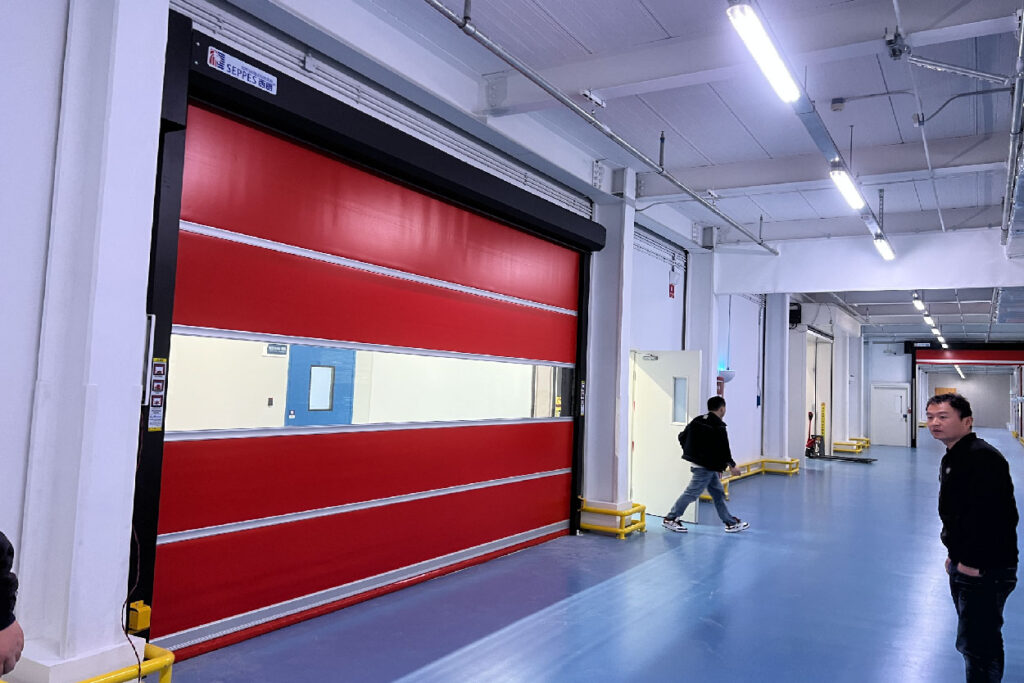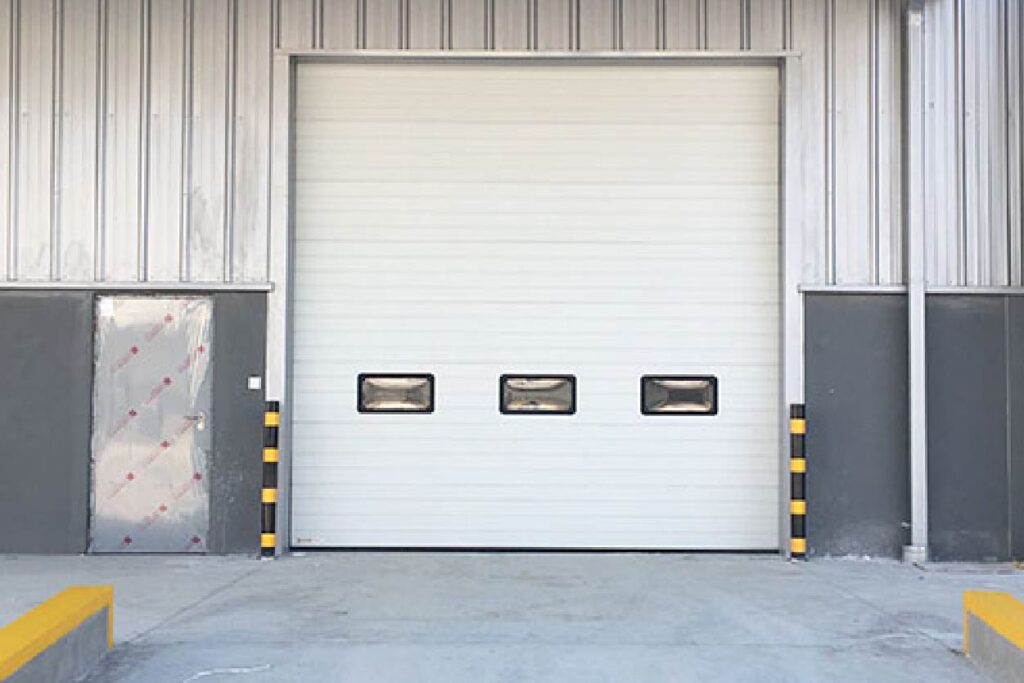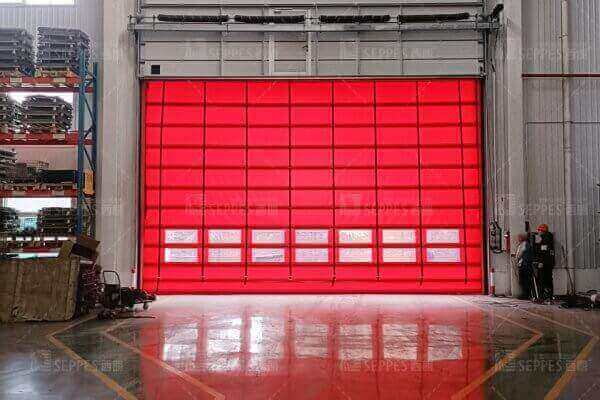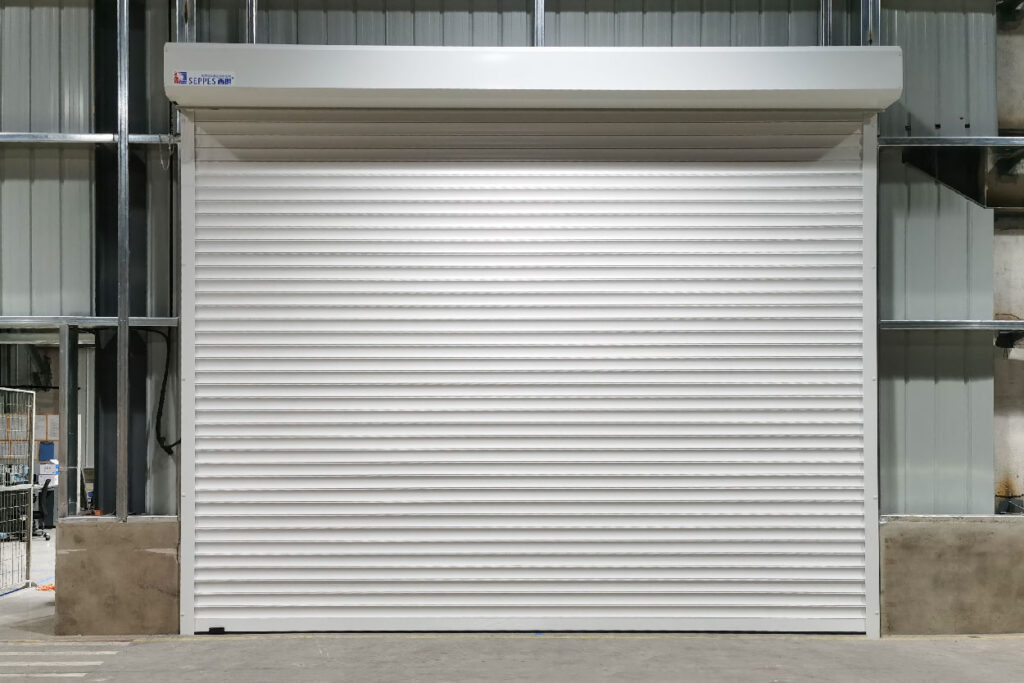Why do industrial warehouses need professional industrial door systems?
In modern logistics and warehousing systems, the safety, efficiency, sealing performance, and automation level of entrances and exits directly affect operational rhythm, energy consumption control, and personnel passage efficiency. **Warehouse industrial doors**, as important infrastructure connecting internal logistics with the external environment, are gradually transitioning from traditional partition structures to intelligent, high-performance, and multifunctional systems.
Compared to traditional door systems, industrial doors must withstand more frequent opening and closing cycles and meet more complex operational requirements, such as wind pressure, moisture, temperature differences, and pest and dust prevention.
Mainstream Warehouse Industrial Door Types Explained (with charts)
In today’s competitive logistics environment, selecting the right door system can significantly impact warehouse efficiency and safety. To help warehouse managers make informed decisions, it’s important to understand the available options. The five most common types of warehouse industrial doors on the market today each have their advantages and are suitable for different usage scenarios. The table below summarizes the structural characteristics, applicable areas, performance focus, and representative configurations of each type of door.
High Speed Roll-Up Door

The door uses a flexible PVC curtain and guides it up and down quickly along aluminum alloy rails.
Opening/closing speed: 0.8–1.5 m/s, customizable
Typical applications: Internal area partitioning, cleanroom access, cold chain zoning
Advantages: Rapid opening/closing, energy-efficient, optional transparent windows
Sectional Overhead Door

Structural Features: Door panels consist of a metal composite layer + polyurethane insulation layer, divided into sections for sliding and lifting.
Lifting Methods: Three types: standard lifting, high-position lifting, and vertical lifting.
Typical Applications: Main loading/unloading ports, large warehouse passageways.
Advantages: Sturdy structure, thermal insulation and wind resistance, adaptable to different spatial layouts.
High Speed Fold-Up Door

Structural Features: Segmented curtain fabric supported by wind-resistant rods, top-stacking roll-up design, suitable for high door openings
Typical Applications: Coastal warehouses, large door openings, areas with strong wind pressure
Advantages: Strong wind resistance, stable structure, compatible with complex roof structures
Insulated Roller Door

Structural Features: The slats are made of double-layer aluminum alloy or foam composite material
Typical Applications: Cold storage warehouses, temperature-controlled areas
Advantages: Excellent insulation performance, energy-saving and cost-effective, easy to operate
Aluminum Shutter Door

Structural Features: Metal slats are rolled up and stored, lightweight structure
Typical Applications: Entrances and exits of small and medium-sized warehouses, security doors
Advantages: Rust-resistant, aesthetically pleasing, reasonably priced
Comparison table of industrial door types
| Industrial Door Types | Structural Features | Opening and closing method | Advantages and Features | Typical application scenarios |
| High Speed Roll-Up Door | Flexible PVC door curtain, quickly rolls up and down | Motor drive + radar/button | High-speed opening and closing, good sealing, energy saving and noise reduction | Warehouse partitioning, cold chain logistics, clean rooms |
| Sectional Overhead Door | Multi-section metal composite door panel, slides along the track to open | Motor/torsion spring drive | High thermal insulation strength, good wind resistance, strong adaptability | Entrances and exits, loading platforms, main exterior doors |
| High Speed Fold-Up Door | Segmented curtain fabric + wind-resistant rod, stacked structure | Industrial hoist motor | Strong wind resistance, suitable for high door openings, small installation space | Air vents, logistics center exterior walls, heavy industrial sites |
| Insulated Roller Door | Double-layer aluminum alloy curtain slats + heat-insulating core material, roller shaft structure | Motor + controller | Good thermal insulation and heat insulation, dustproof and corrosion resistant | Cold storage, temperature-controlled warehouses, food and drug production facilities |
| Aluminum Shutter Door | Single-layer or double-layer metal curtain slats, simple track | Manual/electric switch | Attractive and lightweight, high cost performance | Secondary entrances and exits, tool rooms, warehouse equipment rooms |
Analysis of Selection Factors for Warehouse Industrial Doors
In practical applications, the selection of a suitable warehouse industrial door should be based on the following core parameters:
| Element classification | Specific details |
| Door opening dimensions | For large warehouse entrances, stacking doors or sliding doors are recommended. When the door height is ≥5m, a custom wind-resistant structure is required. |
| Opening and closing frequency | For high-frequency operation areas (such as sorting areas or cold chain entry/exit zones), high-speed doors are recommended, supporting ≥500 openings/closings per day. |
| Thermal insulation | For areas with high temperature control requirements, doors with polyurethane panels ≥40mm thick or foam-filled aluminum roll-up structures should be selected. |
| Wind resistance rating | Main exterior doors must have wind pressure resistance of ≥10 levels, equipped with wind-resistant rods or dual-track reinforced structures. |
| Automation requirements | Whether integration with warehouse management systems, barcode linkage, radar sensing, or safety interlock systems is required will determine the selection of the control system. |
| Budget range | The budget for a single door will determine material selection and the complexity of the electrical control system; it is recommended to evaluate the overall cost-effectiveness by considering both initial costs and long-term maintenance costs. |
Safety and Compliance Standards (Important for Global Projects)
In addition to speed and sealing, modern warehouse doors must also comply with multiple safety and structural standards to ensure reliability in international projects or long-term operations:
CE Certification / EN13241: Industrial door safety structure, photoelectric protection, and electrical control stability
ISO 9001 & ISO 14001: Quality management and environmental requirements
UL / FM (American market): Electrical and fire safety requirements (e.g., sliding doors/fire doors)
IP54/IP65 protection ratings: Suitable for outdoor/humid working environments
Recommendation: When engaging in export or overseas projects, it is essential to obtain door structure diagrams, electrical control schematics, certification documents, and installation manuals.
Typical scenario configuration recommendations
| Scenario | Recommended Door Types | Special configuration recommendations |
| Large main warehouse entrance/exit | Sectional Door / Fold-Up Door | Reinforced rails + wind resistance rods + safety photoelectric sensors |
| Refrigerated/frozen warehouse | Insulated Roller Door | Heated seals + radar sensors + fully enclosed tracks |
| Intra-warehouse logistics zone | High Speed Roll-Up Door | Transparent windows + magnetic ring radar + safety bottom edges |
| Port logistics warehouse | Fold-Up Door | Dual motor configuration + wind resistance reinforcement + variable frequency electronic control |
| Equipment maintenance room | Aluminum Shutter Door | Manual + remote control switches, high cost performance |
Maintenance and operation strategy
Even high-strength industrial doors require regular inspection and maintenance after long-term use:
| Period | Inspection items | Maintenance Recommendations |
| Monthly | Rails/bolts/curtain tension | Check for loose parts and abnormal noises, and lubricate the tracks as needed. |
| Quarterly | Motor/inverter/photoelectric system | Test the limit switches, overheat protection, and sensor response speed. |
| Semi-annually | Door body cleanliness, seal strip integrity | Clean any stains and replace any worn parts. |
| Annually | Structural inspection/wind resistance components | Check the springs, wind rods, lifting ropes, and spare parts inventory. |
Conclusion: Industrial doors are both the starting point and the barrier for warehouse automation.
With the rise of automated warehouses, smart logistics, and green energy factories, warehouse industrial doors are no longer just a “door opening and closing” passageway device, but a critical system that affects safety, efficiency, cost, and brand image.
When selecting a model, companies should comprehensively consider the door structure, electrical control intelligence, maintenance cycle, and long-term operation to form the best solution for the application scenario.
FAQ
Q1: Are high-speed doors suitable for warehouse main entrances?
High-speed doors work well for medium-sized or low-wind-speed warehouse main entrances. For large door openings or areas with high wind pressure, we recommend using sliding doors or stacking doors.
Q2: Can different door types be combined?
Yes. For example, you can install sliding doors on exterior walls and use high-speed doors for interior partitions. This setup optimizes both energy savings and operational efficiency.
Q3: Is maintenance complicated? Does it require professional personnel?
Most warehouse industrial doors feature a modular design, so operators can handle routine cleaning themselves. However, we suggest scheduling a professional inspection once a year to ensure long-term reliability.

